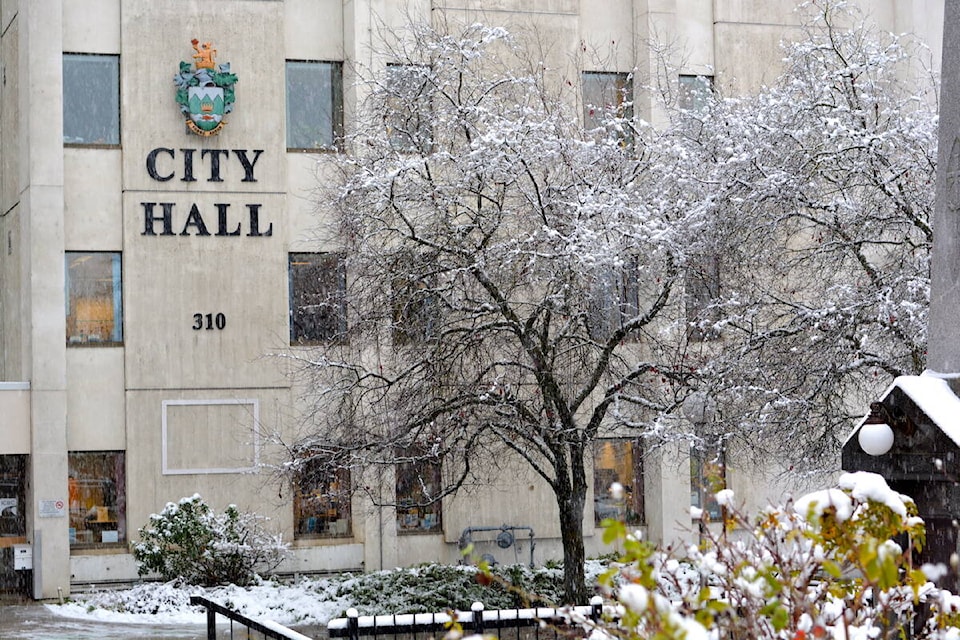by Timothy Schafer
Local Journalism Initiative Reporter, The Nelson Daily
Nelson sits in the middle of the pack for average, before-tax income for Kootenay communities, according to a recent State of the Basin Focus report.
Out of 28 East and West Kootenay municipalities detailed in the report, Nelson sits 14th — at $52,919 average income of individuals before-tax — just behind Castlegar ($53,645) and Cranbrook ($54,122).
The data — based on numbers from 2021 — showed Nelson with a 25.9 per cent change from 2016 when the city had an average of $42,037. During that time span, Nelson edged ahead of Trail, which showed a $50,592 average in 2021, but was ahead of Nelson in 2016 at $44,502.
The Kootenay region title for the highest average earning community goes to Elkford with an average of $76,738. The top-three communities are from the East, with Sparwood in second at $71,557 and Fernie at $69,087
The bottom nine municipalities are all in the West Kootenay-Boundary region, with Slocan topping the bottom at $34,694. In 2016, the average for Slocan was $26,268. Ahead of Slocan is Greenwood ($36,895), Silverton ($39,716), Midway ($41,902), Kaslo ($43,027), Salmo ($43,435), Grand Forks ($43,725), Creston ($44,229) and Nakusp ($45,864).
Rossland nails down the bragging rights for the West Kootenay with the highest average at $66,990, with Warfield ($60,293) and Montrose ($58,601) right behind.
The average before-tax income in the Kootenay Development Region was $53,203, according to the report’s findings, a figure that has increase over 20 per cent in the last five years.
In 2016, the average income was $43,738.
“It is important to note that government transfers and other relief programs related to the COVID-19 pandemic, such as the Canada Recovery Benefit, were still in place in 2021 and influence the income data presented,” the report read.
Within the Regional District of Central Kootenay, the electoral area with the highest average income was Area J ($58,000) with Area F not far behind ($57,000), while the lowest was Area D ($36,000).
Cash in hand
When comparing average income by gender in 2021, there is a noticeable gap in the region, but not quite as wide as the rest of the province.
The average income gap in Central Kootenay is 28.8 per cent — with the average income of men at $61,074 and the average income of women at $41,882 — while across B.C. the wage gap between women and men is 30.4 per cent. The average income gap across Canada is 27.6 per cent.
By the hour
Over the last year the median hourly wage in the Kootenay Development Region rose by over $4 per hour, and now sits well above the provincial and national rate.
The median hourly wage for all employees (full- and part-time) has trended upward in the region by 14.3 per cent between 2022 and 2023.
“This is the largest increase across all B.C. development regions, exceeding the one-year median hourly wage increases in B.C. (7.1 per cent) and Canada (6.5 per cent),” the report read.
That figure translated into an hourly wage of $32 — compared to $30 in B.C. and $28.75 in Canada — and is the highest median hourly wage in the province, with the next highest median hourly wage rate in Cariboo ($30.65), followed by Northeast and the Lower Mainland ($30), with the lowest median hourly wage rate the Thompson-Okanagan ($28.85).
The report found that full-time employees earned more per hour on average than part-time employees in the Kootenay Development Region, with full-time employees at $31.25 , while median part-time wages were 64 per cent of the full-time earnings at $20 per hour.
Living wage
Nelson has the third lowest living wage calculation out of 20 communities across B.C. that calculated their local living wage.
At $21.14, only Dawson Creek ($20.64) and Kamloops ($20.91) had a smaller living wage than Nelson.
The living wage is the hourly amount that each of two working parents with two young children must ern to meet their basic expenses, including rent, childcare, food and transportation) once government taxes, credits, deductions and subsidies are taken into account.
The calculation does not, however, include saving for future plans or debt repayment.
“No matter where they live, families should be able to afford a decent life,” the report stated.
The current B.C. minimum wage is $16.75 per hour.
